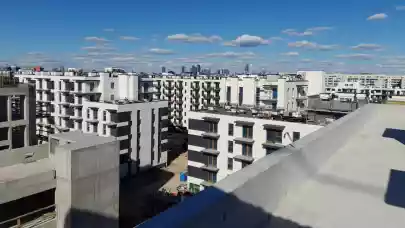
JLL's forecast for Q3 2024 new flat sales in major markets in Poland has proven accurate, with most cities experiencing a downturn compared to Q2 2024. The number of transactions across the six main markets reached approximately 9,200 units, marking a 6.9% quarter-over-quarter decline. This slowdown was mirrored in new supply, with only 12,600 units launched for sale across these markets. JLL experts provide a comprehensive overview of the residential market conditions in Q3 2024.
Sales and new supply deceleration
Warsaw maintained stable sales at around 3,000 units, while Kraków saw a slight uptick. Wrocław and the Tri-City experienced sales declines of 6% and nearly 10%, respectively. Poznań and Łódź faced the steepest drops, ranging from 22% to 25%. The cumulative sales across the six largest markets totalled approximately 9,200 flats, a 6.9% quarter-over-quarter decrease.
New supply also slowed in most cities, with a total of 12,600 units introduced across the six markets. Wrocław bucked this trend, nearly doubling its new supply compared to sales, resulting in an offer expanded from around 4,500 to over 8,700 flats by September's end, despite the number of units introduced to the market decreasing for the third consecutive quarter.
Aleksandra Gawrońska, Director and Head of Residential Research at JLL, notes, "The most pronounced declines in new supply were recorded in Łódź, Poznań, and the Tri-City, with reductions ranging from 36% to 39% compared to Q2. This contraction in supply is a natural response to softening demand and substantial existing inventory in certain markets. Despite this overall trend, Łódź was the only city to register a decrease in available flats during Q3, although its inventory remained robust at over 8,000 units. Notably, all markets experienced a weakening in the offer-to-sales ratio, indicating a growing imbalance between supply and demand."
Housing price stability
Housing prices have remained relatively stable. However, it is worth noticing that a significant pool of new developments is now targeting affluent buyers with substantial savings or high creditworthiness. Consequently, we are witnessing an increasing number of upscale properties being launched for sale at record prices, notably influencing the overall average price in the market. The discounts are available during negotiations, however, they often fall short of bargain-hunters' expectations.
At the end of September 2024, average prices for available flats saw slight increases across all markets except Kraków, with quarterly changes ranging from -0.8% to 2.0%. Over the past 12 months, Łódź led with a 15.1% price increase, followed by Tri-City (14.0%) and Warsaw (11.5%). Other markets experienced annual price growth between 7.0% (Wrocław) and 9.2% (Poznań).
Kazimierz Kirejczyk, Senior Strategy Advisor for the Housing Sector at JLL, explains, "The combination of a pleasant summer, high credit rates, elevated prices, and uncertainty surrounding future housing policies discouraged non-urgent buyers. Additionally, less attractive rental yields and ambiguous forecasts for price increases and tax changes deterred investment purchases. Banks, recognising the need to boost lending, have begun reducing mortgage rates for creditworthy buyers with substantial equity."
Market outlook
In the market environment, the most critical factor influencing the government's future actions was the several days of flooding in mid-September, which caused massive damage in more than a dozen towns in Lower Silesia. Consequently, other policy initiatives have been postponed, including announcing a new housing policy. This delay has further reduced the likelihood of launching the 'Start/Zero Interest' loan program in the first quarter of 2025. The immediate future does not look rosy for either buyers or sellers. It seems to have finally dawned on market participants that there will either be no new housing programme to support the purchase of a flat or that the availability and scale of subsidised loans will be severely limited. Interest rates are also not expected to fall significantly soon. On the other hand, economists anticipate a sharp rise in inflation, delaying substantial lending rate reductions until early 2026.
Kirejczyk advises, "Over the next two to three quarters, patience and cautious introduction of new projects will be crucial. Fortunately, many larger developers have diversified project portfolios and sufficient cash reserves to navigate this period."



